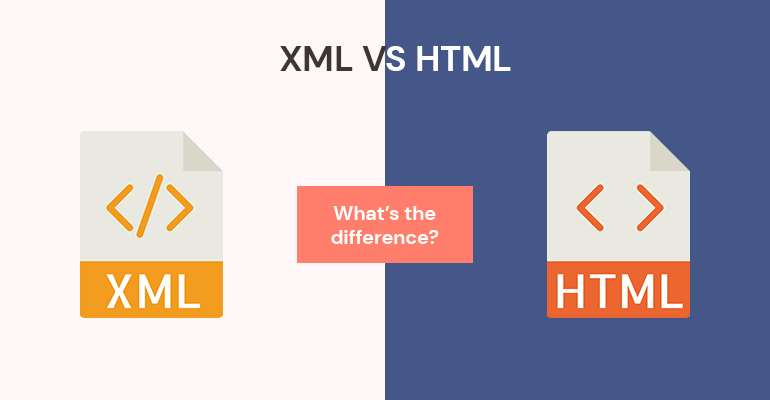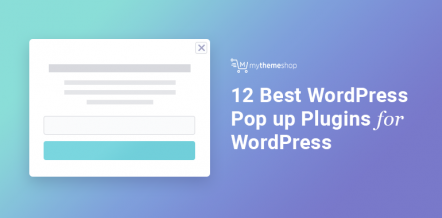Amongst so many markup and coding languages, it is possible that you get confused between XML vs HTML. No worries, in this detailed post, we will tell you the exact difference between the two.

As a beginner, especially when you land up in the web designing industry, there are so many languages one can use to design the landing pages, creatives and graphics. You must know which language to use for what purpose.
1 What is XML?
XML stands for eXtensible Markup Language. It is a simple markup language that is used for only transporting data but not for displaying it.
It supports textual data format via Unicode to support different human languages. The primary focus of XML is on the simplicity and usability across the internet.
It is largely used to represent complex data structures such as those which are being used in web services.
Every XML document ends with the .xml extension.
2 What is HTML?
HTML refers to HyperText Markup Language. Unlike an XML document, HTML deals with the creation and editing of web pages. If we were to explain the same in a simplified language, HTML handles ways in which we can display data on the browser.
HTML is not case sensitive and can be edited using any simple text editor, such as the Notepad now Windows or TextEdit on iOS.
HTML operates by means of predefined tags and attributes. By using these predefined tags, we can create different types of designs and structure for the web pages that could be further displayed to the users via a web browser.
Time to delve into a detailed comparison between XML and HTML.
3 HTML vs XML – Comparison
| HTML | XML |
| It is an abbreviation of HyperText markup Language | It is an abbreviation of eXtensible Markup Language. |
| It is static | It is dynamic |
| It would still work with small errors | It won’t run if there is even a small error. XML is case sensitive |
| It is a language used to display data in a proper design format | It is not used for programming or designing and presenting data. It is just used during the transportation of data |
| It has predefined tags | It has user defined XML tags |
| It has limited number of tags | There is no limit on the number of tags. Users can create as many tags they want |
| Closing tags are not necessary | Closing tags are necessary |
| It is used for rendering the data at the client side | It is used for data transportation from an application to a database |
| It does not preserve white spaces | it preserves white spaces |
4 What is the Importance of XML?
Here is a rundown of what makes XML important:
- The biggest advantage of XML is that it facilitates the transfer of information across different platforms. For eg: if you want to transport data between an application and a database, XML can do that pretty easily. You just have to use the tags properly according to the way you define them.
- XML can simplify the process of handling information structure with an application. Since it makes it easy to transfer information and data across different platforms, XML has helped develop information-sharing standards on the web.
5 What is the Importance of HTML?
The advantages of HTML are simple and easy to enumerate:
- An HTML document has become the standard building block on the web. It works across different systems and services, and virtually every page or app nowadays is a conglomerate of HTML tags.
- HTML is easy to grasp and learn. In fact, it is one of the first languages that newbie developers tend to take when learning how to code.
- It deals with how data looks and how content is displayed. As such, by making judicious use of tags, objects and other elements, building a website becomes easy. Using HTML, you can display data in a presentable way.
- You can create a stunning webpage using HTML and basic PHP functions.
6 Disadvantages of using XML:
Here, are few drawbacks of using XML:
- XML requires an application for processing.
- The XML syntax is similar to many other alternatives ‘text-based’ data transmission formats. This could be confusing sometimes.
- It does not support an intrinsic data type.
- It has a redundant syntax.
- Does not allow you to create your own tags.
7 Disadvantages of using HTML
Here, are few drawbacks of using HTML:
- Syntax checking is difficult using a default text editor.
- Not recommended to use when there is an exclusive data exchange.
- You can define the semantics of a document using HTML.
- It is sometimes unstable.
- Doesn’t support data exchange or transport.
8 XML Example:
<?xml version = "1.0"?>
<contactinfo>
<address category = "website">
<name>MTS</name>
<Website>MyThemeShop</Website>
<mobile>9999999991</mobile>
</address>
</contactinfo> 9 HTML Example:
<!DOCTYPE html>
<html>
<head>
<title>MyThemeShop</title>
</head>
<body>
<h1>MyThemeShop</h1>
<p>A marketplace for WordPress Themes and Plugins.</p>
</body>
</html> 10 Frequently Asked Questions (FAQs)
What is the main difference between HTML and XML?
HTML is used to represent data while XML is used to transport data. This is the most basic and simple explanation in order to explain it to a layman.
Can XML replace HTML?
No, instead, XML provides an alternative way to set your own markup elements.
HTML comes with pre defined tags while, in XML, you can define your own XML tags. Moreover, XML syntax includes the current HTML version i.e. XHTML and HTML5.
HTML will remain active on the web. It is the most basic language to design a web page and display data.
Is HTML based on XML?
Both XML and HTML are based on SGML. You can say that HTML is an instance of XML.
11 Final Thoughts:
We hope that by now, you must have got a clear idea of how HTML is different from XML and vice versa. Though it is a very easy topic, we have tried our best to explain the difference in a simplified format so that it is easy for the beginners as well to grasp the same.
Though, if you still have any doubts regarding the same or have any confusion, you are most welcome to ask them in the comments section below. We would be happy to help you.




